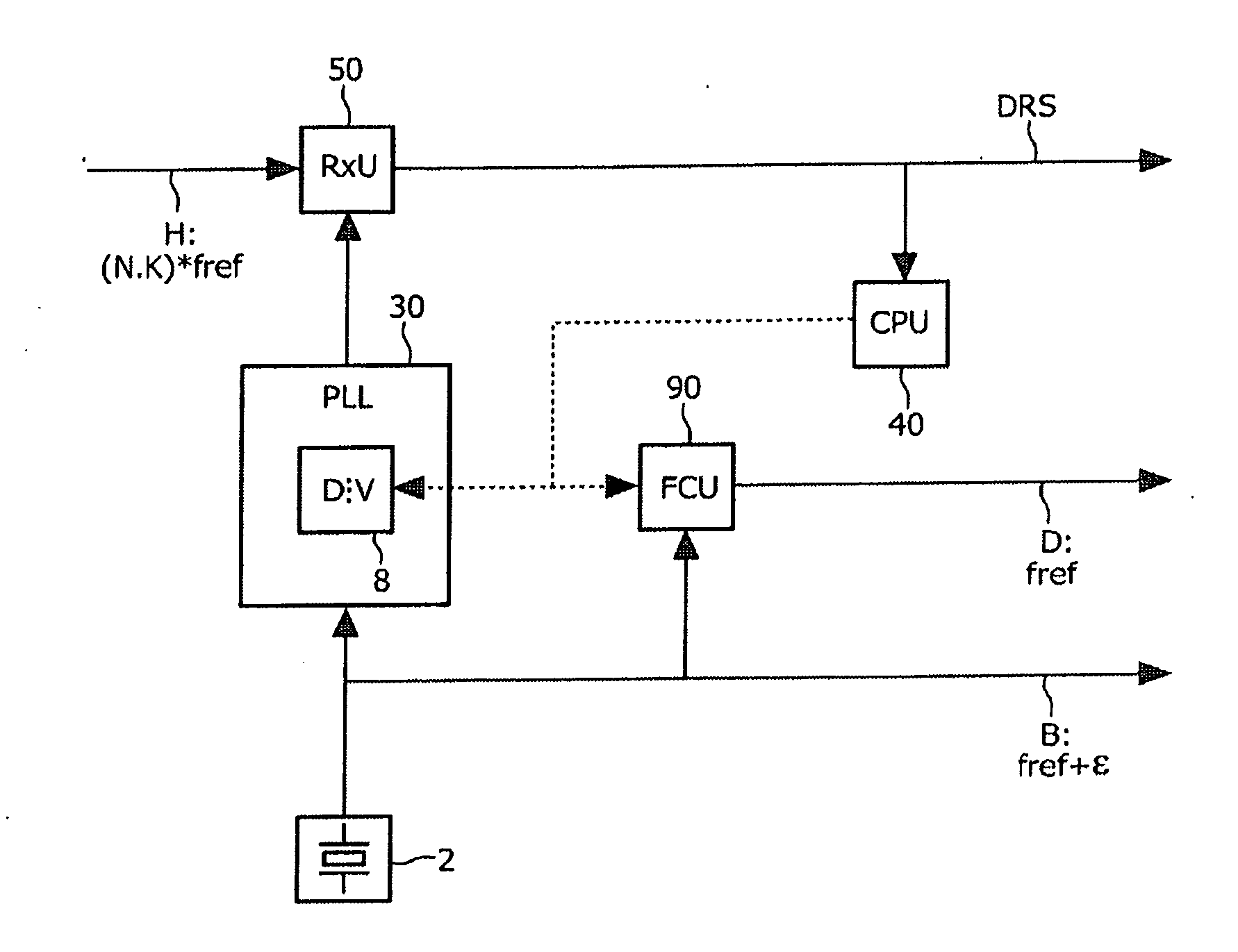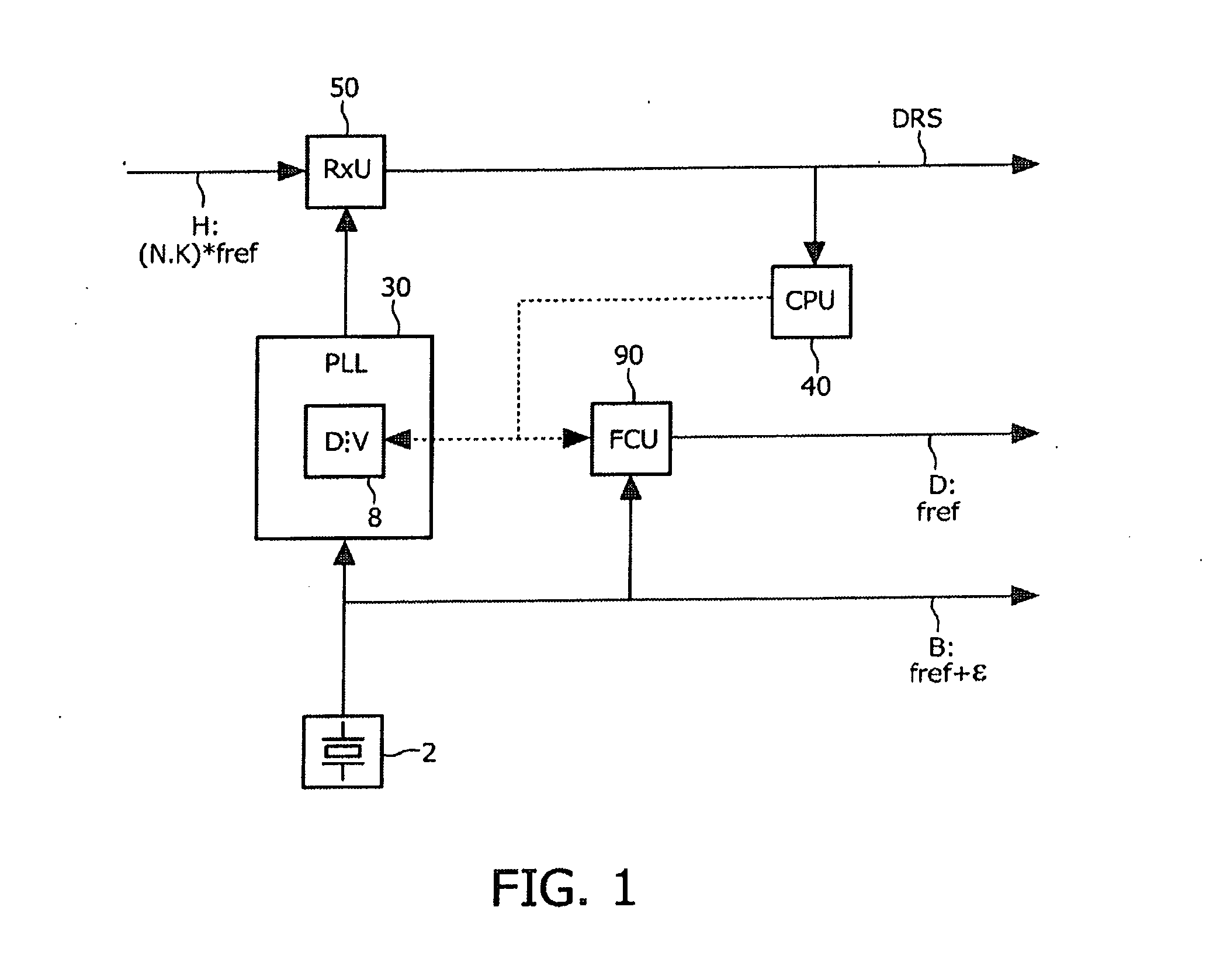Synchronization scheme with adaptive reference frequency correction
a reference frequency correction and synchronization scheme technology, applied in the direction of synchronization arrangement, resonant circuits using central processing units, wireless communication, etc., can solve the problem that the crystal oscillator alone cannot provide a sufficiently constant frequency to meet the frequency stability requirements, the prior art solution has the disadvantage of additional cost and space, and the frequency deviations. problem, to achieve the effect of improving the synchronization scheme, the method and the apparatus
- Summary
- Abstract
- Description
- Claims
- Application Information
AI Technical Summary
Benefits of technology
Problems solved by technology
Method used
Image
Examples
Embodiment Construction
[0032]The preferred embodiment will now be described based on a synchronization of a mobile terminal to a synchronization information or synchronization signal emitted by a cellular network.
[0033]FIG. 1 shows a schematic block diagram indicating the synchronization mechanism underlying the preferred embodiment. The synchronization of the reference frequency in the mobile terminal or mobile user equipment is accomplished by deriving from a control information of a divider 8 of a phase locked loop (PLL) circuitry 30 a further control information for a frequency conversion unit 90. The PLL circuitry 30 is supplied with an uncorrected reference oscillator signal B. This uncorrected reference oscillator signal B for the phase locked loop circuitry 30 is generated by a simple crystal oscillator 2 having no means or circuitry for frequency control. The setting of the divider 8 and the frequency conversion unit 90 and their configuration is performed by a control unit or mechanism 40. This ...
PUM
 Login to View More
Login to View More Abstract
Description
Claims
Application Information
 Login to View More
Login to View More - R&D
- Intellectual Property
- Life Sciences
- Materials
- Tech Scout
- Unparalleled Data Quality
- Higher Quality Content
- 60% Fewer Hallucinations
Browse by: Latest US Patents, China's latest patents, Technical Efficacy Thesaurus, Application Domain, Technology Topic, Popular Technical Reports.
© 2025 PatSnap. All rights reserved.Legal|Privacy policy|Modern Slavery Act Transparency Statement|Sitemap|About US| Contact US: help@patsnap.com



